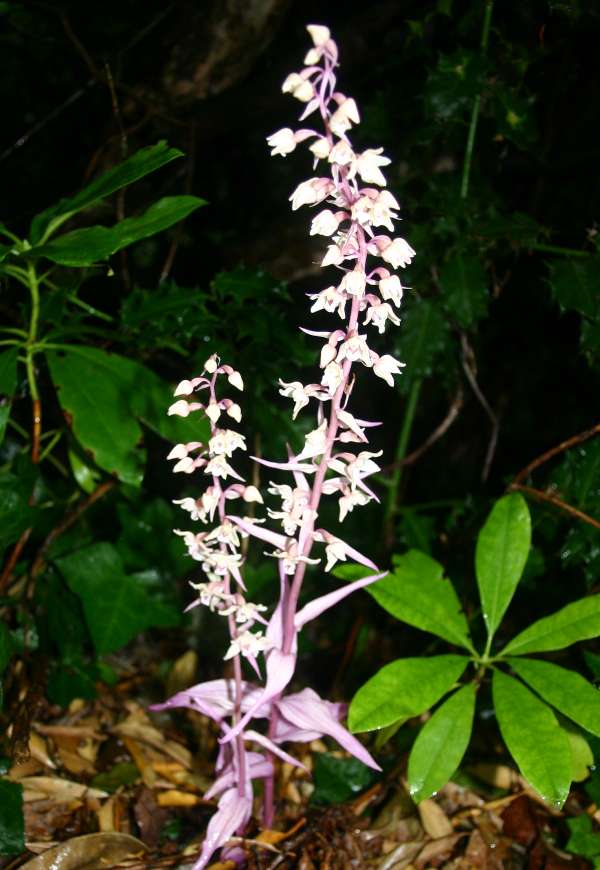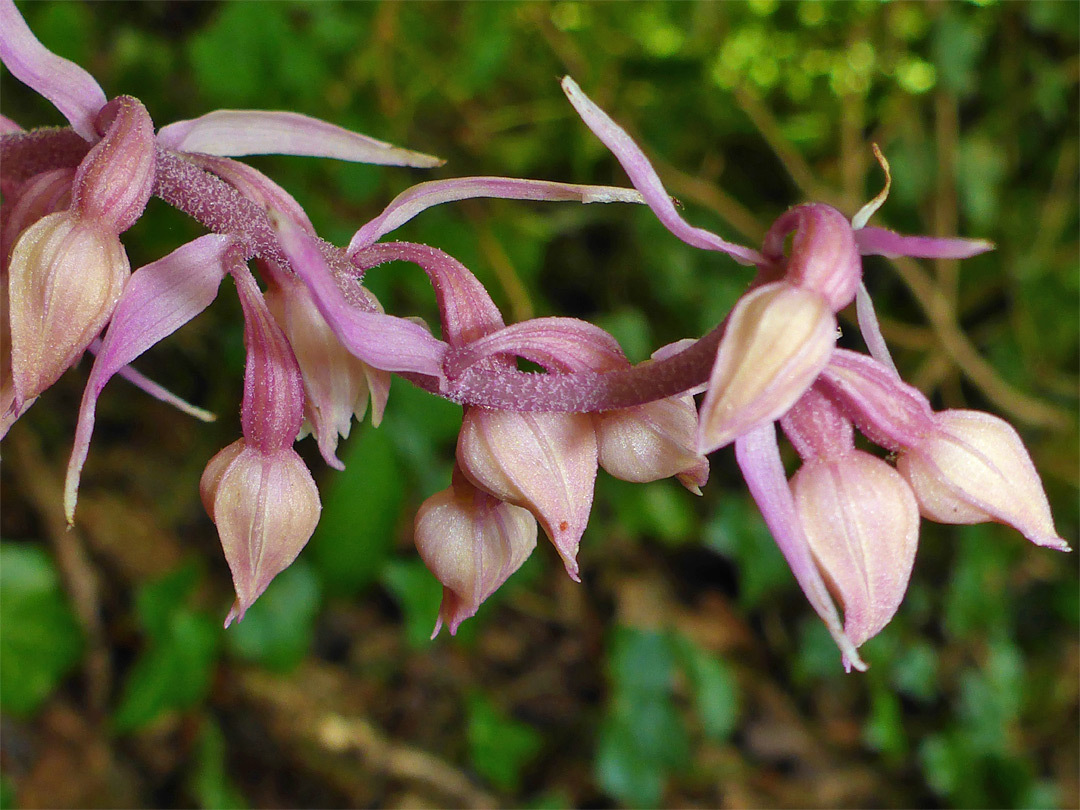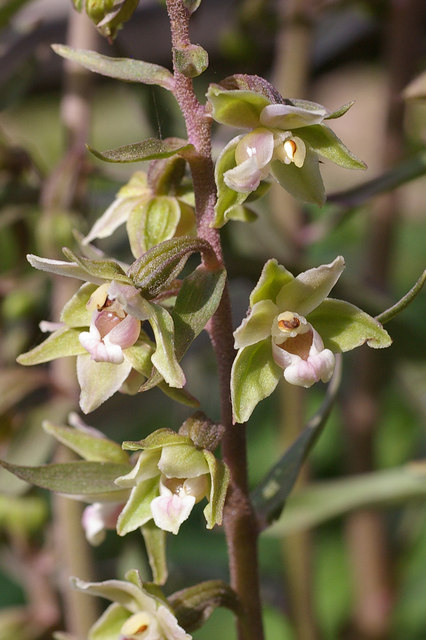Epipactis Purpurata
Epipactis purpurata, also known as Violet Helleborine, is a beautiful and complex flower that has captivated the attention of botanists and enthusiasts alike. With its stunning purple hue and intricate structure, epipactis purpurata is a marvel of nature that deserves recognition and preservation.
Pain Points Related to Epipactis Purpurata
Despite its beauty, epipactis purpurata faces several challenges that threaten its survival. Its habitat is under threat due to human activity, including deforestation and urbanization. This has resulted in a decline in population and restricted distribution of the species. Moreover, the plant also falls prey to herbivores and invasive species, further threatening its existence.
The Target of Epipactis Purpurata
Epipactis purpurata is mainly found in North America, particularly in the western United States and Canada. It thrives in a range of habitats, including moist woodlands, forest margins, and meadows.
Summary of Main Points
Epipactis purpurata is a beautiful and complex flower that faces several challenges that threaten its survival. The plant is mainly found in North America, particularly in the western United States and Canada. It thrives in a range of habitats, including moist woodlands, forest margins, and meadows.
The Target of Epipactis Purpurata and Personal Experience
Epipactis purpurata is one of my favorite flowers. I have seen it growing in the wild on numerous occasions, and each time, I am in awe of its beauty and complexity. The flower's purple color is stunning, and its structure is intricate and fascinating. I have always been curious about the plant's habitat and the challenges it faces in the wild.

Epipactis purpurata is adapted to grow in a range of habitats, making it a versatile plant that can thrive in different environments. Its complex structure enables it to attract pollinators and adapt to its surroundings. Despite its strength, the plant still faces several challenges in the wild, including habitat loss and invasion of non-native species.
Challenges Faced by Epipactis Purpurata
Epipactis purpurata faces numerous challenges that threaten its existence. One of its biggest challenges is habitat loss due to human activities such as deforestation and urbanization. This has resulted in a decline in population and restricted distribution of the species. Moreover, the plant is also vulnerable to herbivores and invasive species, which compete for resources and reduce its chances of survival.

To address these challenges, it is important to educate people about the importance of preserving natural habitats and protect the plant's habitat wherever possible. Additionally, measures such as removal of invasive species and protection from herbivores can help to increase the chances of the plant's survival in the wild.
Conservation Efforts for Epipactis Purpurata
Conservation efforts are being made to preserve epipactis purpurata and protect its habitat. Several organizations are working to increase public awareness about the importance of preserving natural habitats and the impact of human activities on ecosystems. Additionally, some organizations are working to remove invasive species and protect the plant's habitat from herbivores. These efforts have resulted in an increase in the population of epipactis purpurata in some areas.
Conclusion of Epipactis Purpurata
Epipactis purpurata is a beautiful and complex flower that is facing several challenges that threaten its survival. The plant is mainly found in North America, particularly in the western United States and Canada, and thrives in moist woodlands, forest margins, and meadows. To ensure the plant's survival, it is important to raise awareness about the threats it faces and implement measures to protect its habitat.
Question and Answer
Why is Epipactis Purpurata Important?
Epipactis purpurata is important for several reasons. It plays a role in the ecosystem as a food source for herbivores and provides nectar for pollinators. The plant also has medicinal properties and has been used in traditional medicine for various ailments. It is also a beautiful plant that contributes to the biodiversity of ecosystems.
What are the Threats to Epipactis Purpurata?
Epipactis purpurata faces several challenges that threaten its survival, including habitat loss, competition from non-native species, and herbivore damage. Human activities such as deforestation and urbanization are major contributors to habitat loss.
What is the Distribution of Epipactis Purpurata?
Epipactis purpurata is mainly found in North America, particularly in the western United States and Canada. The plant's distribution is restricted due to habitat loss and competition from invasive species.
What can be Done to Protect Epipactis Purpurata?
To protect epipactis purpurata, it is important to increase public awareness about the importance of preserving natural habitats and the impact of human activities on ecosystems. Measures such as removing invasive species and protecting the plant's habitat from herbivores can also help to increase the chances of the plant's survival in the wild. Conserving the plant's genetic diversity through seed banks and other conservation methods is also important.
Gallery
Photographs Of Epipactis Purpurata, UK Wildflowers; Leaves And Buds

Photo Credit by: bing.com / epipactis purpurata rosea gloucestershire helleborine
Epipactis Purpurata Var. Rosea, Violet Helleborine

Photo Credit by: bing.com / epipactis purpurata violet helleborine rosea flowers var beech orchid frequently grows woodland trees rare dark nature
Violet Helleborine (Epipactis Purpurata) © Ian Capper :: Geograph

Photo Credit by: bing.com / epipactis purpurata helleborine violet geograph square
Epipactis Purpurata Sm. - Préservons La Nature

Photo Credit by: bing.com / epipactis purpurata plante pourpre quelque
Epipactis Purpurata ( Epipactis Violacé )

Photo Credit by: bing.com /